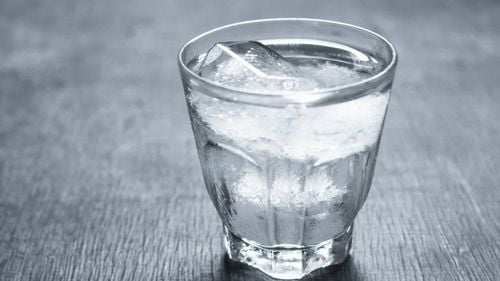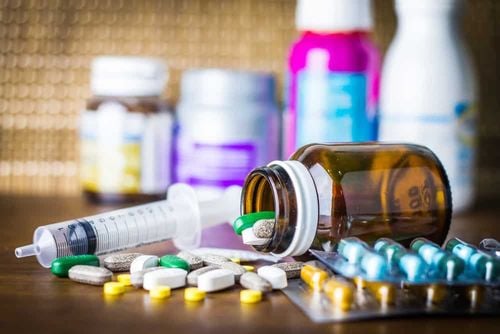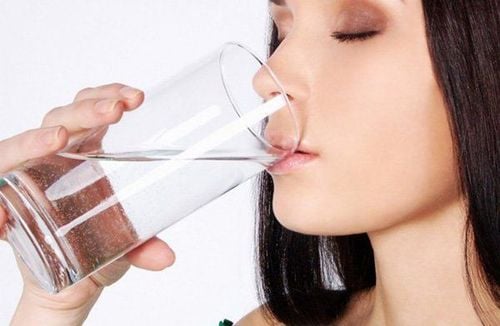This is an automatically translated article.
Your body uses water in all cells, organs and tissues to help regulate temperature and maintain various body functions. Since your body loses water through breathing, sweating, and digestion, it's important to rehydrate by drinking enough water and eating foods that contain water. The following article will provide answers to 19 basic questions about water for human health to help you understand the role of water in your body.
1. Where does drinking water come from?
The drinking water provided to each of our families is obtained from surface water or groundwater sources. Surface water is obtained from streams, rivers, lakes or reservoirs. Groundwater is obtained from an underground source, where it accumulates in aquifers or aquifers. Groundwater is obtained by drilling wells and using pumps to draw water to the surface.
Public water system that supplies water from surface water and groundwater for public use. The water treatment system can be managed by the public or the private sector. Surface water systems draw water from the source, treat it and deliver it to people's homes. Groundwater systems also draw and supply water, but they can't always handle it.
2. What types of health problems can be associated with water quality?
The presence of certain contaminants in water can lead to health problems, including gastrointestinal diseases, reproductive problems and neurological disorders. Infants, young children, pregnant women, the elderly, and immunocompromised individuals may be at increased risk after drinking contaminated water. For example, elevated lead levels can cause serious health problems, especially for pregnant women and young children.
3. How do I know if my water is safe to drink?
State certificates for drinking water products ensure food safety and hygiene is the most accurate proof to determine whether the water you drink is safe or not.
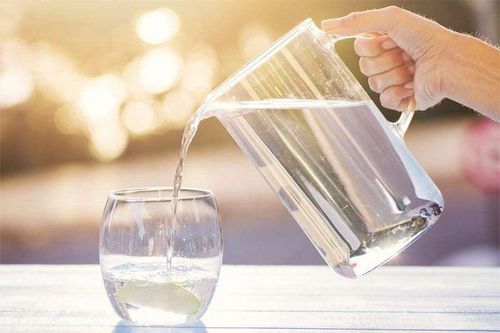
Nguồn nước uống cần đảm bảo an toàn theo tiêu chuẩn của pháp luật
4. How do contaminants get into water?
Contaminants can enter many directions into the water used. Below is a list of the most common sources of pollution: Natural chemicals and minerals (e.g., arsenic, radon, uranium), Local soil-use chemicals (fertilizers, pesticides) worms, livestock, concentrated animal feed), production process, wastewater treatment system malfunction (eg septic system near water source). The United States Environmental Protection Agency (EPA) says there are many pollutants that pose a danger to human health. EPA ensures that the water supplied to residents meets certain standards, so consumers can be sure that high levels of contamination are not present in their drinking water.
5. Who can I contact to get more information about water quality in my area?
Each community water provider must provide an annual report to its customers. The report provides information on local drinking water quality, including its source, the contaminants present in it, and how consumers can participate in protecting drinking water.
6. How often do water plants test water?
The frequency of drinking water testing depends on the number of people to which the plant needs to supply water, the type of water source, and the types of contaminants. Some contaminants are tested more often than others.
7. What are the most common water pollutants?
The United States Environmental Protection Agency sets standards and regulations for the presence and amounts of more than 90 different contaminants in public drinking water, including E. .coli, Salmonella and Cryptosporidium bacteria. More information about specific pollutants and maximum pollution levels can be found on the US Environmental Protection Agency website
8. What should I do if I want my home water supply tested?
While there are plants that provide the safest public water, if you are concerned about contaminants in your home water system contact a drinking water certifier to get a list of agencies capable of testing and making conclusions about water sources.
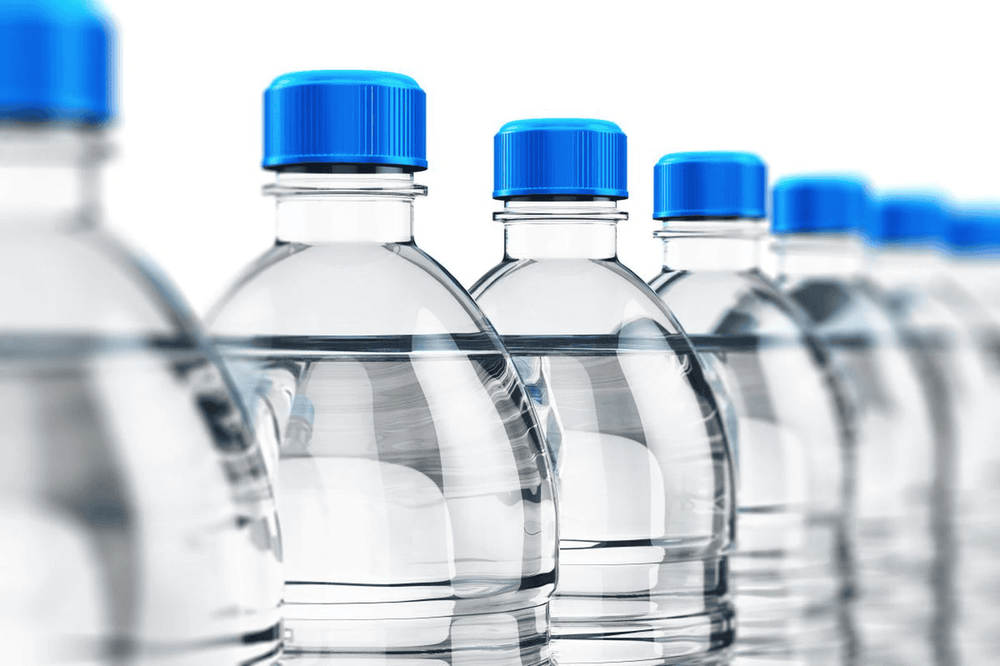
Bạn có thể chủ động kiểm tra nguồn nước mình đang sử dụng
9. Who should I contact if my water has an unusual smell, taste or color?
Changes in taste or color of water are not necessarily signs of a threat to the health of the user. However, sometimes changes can be a sign of a serious problem. If you notice a change in your household's water supply, call your local water utility authority. If residents wish to have their water tested, it is the responsibility of the local health department to assist in explaining any testing people need for various contaminants. If the local health department is unable to intervene or conduct the necessary tests, residents can contact local water assessment licensed agencies to perform testing.
10. How do I know if the water source meets the public water source standards?
When water quality standards are not met, public water plants must notify the public through the media (television or radio), mail, or other means.
11. How do I find out if water plants have advice on water quality in the community?
Your public water plants are responsible for notifying residents if the water quality does not meet the standards of the Environmental Protection Agency or other competent authorities. People will be informed by media (TV, radio), mail or other means. There are three levels of public notice. Level 1 Notifications relate to the most acute and severe pollution events. Notice must be broadcast by local media within 24 hours. Tier 2 allows for 30 days notice. Tier 3 provides notification through waterworks reports.
12. If there is advice on needing to boil water, how do you disinfect the family's drinking water?
To disinfect drinking water, people should boil the water for at least one minute. Boiling water for at least one minute can kill all kinds of harmful bacteria, parasites and viruses in drinking water. Chemicals (eg, bleach) are sometimes used to disinfect small amounts of household drinking water. The Cryptosporidium parasite can survive for a long time, even after the water is treated with chlorine or iodine. Cryptosporidium can be removed from water by filtration through a reverse osmosis filter, “one micrometer absolute” filter, or a filter certified to remove Cryptosporidium according to NSF International Standard 53 to eliminate the hazard. cancer.
13. How many main types of groundwater wells are there?
According to the United States Environmental Protection Agency (EPA), there are three basic types of groundwater wells: dug, drilled and open well. Proper well construction and ongoing maintenance are key to the safety of a home's water supply.
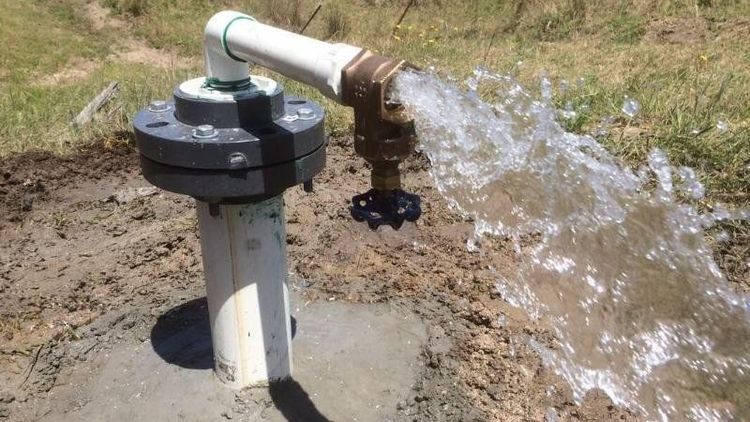
Hình ảnh giếng nước khoan cung cấp nước cho người dùng
14. Do family wells need to be tested?
Any individual or collective well should be tested to ensure that the well water is safe to drink. The local environmental protection agency is responsible for ensuring that the public water supply is safe. However, do not monitor or treat drinking water from private wells.
15. How do contaminants (germs and chemicals) get into my well water?
A private well that uses groundwater as its main source of water. There are many sources of groundwater pollution. Below is a list of the most common sources of pollution: Natural chemicals and minerals (eg, arsenic, radon, uranium), locally used chemicals (fertilizers, pesticides). , livestock, livestock operations, use of biological solids), sewage system malfunction (e.g. septic system nearby)
16. What to do if the well water has a strange color, smell or taste?
Whenever you notice a significant change in your water quality, you should have it checked. A change in the taste, color or smell of water is not necessarily a health threat. However, sometimes changes can be a sign of a serious problem.
17. What germs or chemicals should be tested regularly?
Some of the water quality indicators (WQI) and contaminants that should be tested in well water are listed below. The WQI test is a test that measures the presence and amount of certain germs in water. Water Quality Index: Total Coliforms Fecal Coliforms / Escherichia coli (E. coli) pH Contaminant: Nitrates Volatile Organic Compounds (VOCs) Other harmful germs or chemicals that What you should check will depend on where your well is located on your property, where you live, and whether you live in a city or a countryside. These tests may include testing for lead, arsenic, mercury, radium, atrazine, and other pesticides.
18. When should well water be tested?
Families with well water should test thoroughly once a year for total coliform bacteria, nitrates, total dissolved solids, and pH levels. If other contaminants are suspected, they should also test for these. However, take the time to identify potential problems as these checks can be very expensive.
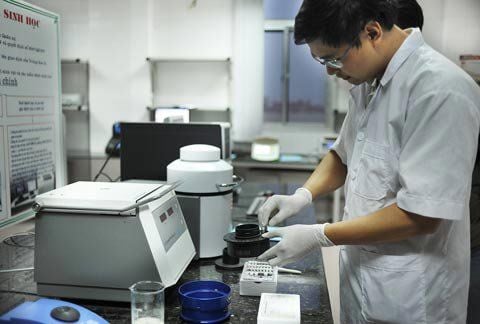
Nên kiểm tra nguồn nước khi thấy nước có các biểu hiện bất thường hoặc định kỳ
19. Who checks the well water quality?
Local health departments or environmental management often test for nitrates, total coliform, coliform in feces, volatile organic compounds, and pH. Health or environmental departments or governments should also have a list of state-certified (licensed) laboratories in the area to test for Water Quality Indicators (WQI) and contaminants. .
The body's daily water needs are mainly met through drinking. Each day, each person needs to drink about 1.5-2 liters of water to ensure the necessary amount of water is 2.5 liters per day. The rest will be replenished through foods. Water supplies for the community are very diverse, including tap water provided by water plants, groundwater provided by wells.... Therefore, it is important to understand and ensure the hygiene of water sources. is very important.
Please dial HOTLINE for more information or register for an appointment HERE. Download MyVinmec app to make appointments faster and to manage your bookings easily.
Reference source: Cdc.gov; lenntech.com




